I have a keychain of the fantastical creature Totoro, the giant rabbit-mouse-like creature that is the emblem of Japan’s Studio Ghibli.
Having Totoro in my bag all day is a constant reminder of what the animated film My Neighbour Totoro represents to me; being in touch with my childhood self. It is also a reminder of what is really important in life; family.
My Neighbour Totoro is by far one of my favourite movies of all time, even if artistically and even plot-wise it is not the best Ghibli film.
The first time I saw My Neighbour Totoro I thought it was a sweet movie and I liked the character of Totoro, and that was all. It was the second time I watched it that it dawned on me how profound and insightful it is. I simply fell in love with it.

(Photo: still from My Neighbour Totoro)
Japanese animation
It was indeed a very pleasant surprise to see that Ghibli’s films are screening in the Cairo International Film Festival. However, as the section is titled Spotlight on Japanese Animated Movies, one has to wonder why only Ghibli films are shown.
Ghibli and its founder Hayao Miyazaki are somewhat well-known in Egypt as the films Spirited Away and Howl’s Moving Castle have been shown often on Showtime cable, so showing films that are not so well-known here could have been an interesting addition because there's much more to Japanese animation than the films of Studio Ghibli.
Makoto Shinkai, for instance, is a great animator, and his film 5 Cm Per Second is one of the most emotional and poetic animated films I have seen.
Films by Satoshi Kon are also very distinctive and mind-bending. In Paprika, he explores the world of dreams from an incredibly unique perspective.
Wolf Children by Mamoru Hosoda, a film which revolves around a mother raising her two half-human, half-wolf kids and the obstacles they face, is also one of the best animated films I have seen in recent years.
Of course, it is often not easy to obtain films for screenings, but since the section at the film festival was called Spotlight on Japanese Animated Film, I was expecting to see a larger variety of genres and animators.
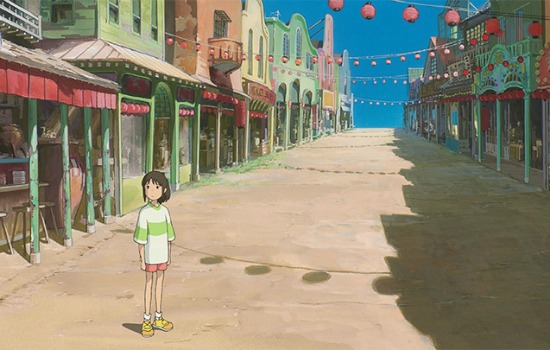
(Photo: Still from Spirited Away)
My Neighbour Totoro is almost plot-deprived, yet it is not bereft of a story. Its story unfolds slowly, unveiling two girls and their father who are waiting for their sick mother, bedridden in the hospital, to get better.
As the film continues, the girls develop a relationship with imaginary characters; Totoros. Having a mother that is sick in the hospital is not an easy experience on a child, and creating these magical beings is their way of coping with these feelings of frustration and worry.
Very few films capture the imaginary life of children like this one, for the very simple reason that there is no grand story behind this fantasy. The movie is not concerned about whether they exist or not. What is more important are these moments they share with the girls and how they offer them solace in their plight.
It is rare to see animation for children that touches on the illness of a parent and long days of waiting, a film that depicts a mundane, everyday life, and in which, if you look close enough, you find a hidden beauty and magic.
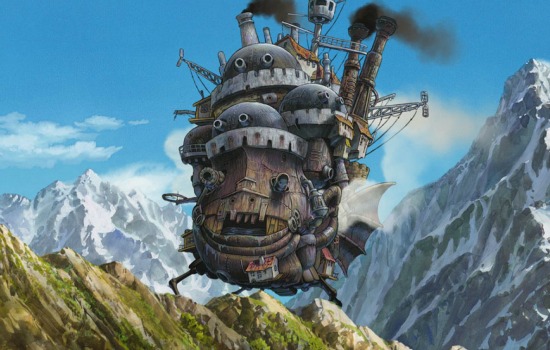
(Photo: Still from Howl’s Moving Castle)
Ghibli’s animation films are the type of movies that you would like your children to be raised on, especially if you have girls. The heroines of Ghibli are always strong and resilient, without it being the focus of the film. Most of the Ghibli films are also in touch with nature and have environmental themes, like Nausicaä of the Valley of the Wind and Princess Mononoke.
Working at a preschool, I see everyday this obsession of girls with princesses and the boys' obsession with superheroes, with gender roles being enforced at a very early age. Although Disney has made some films with strong heroines in the past few years like Brave and Frozen, it seems they were done with the notion of “hey, let’s make a movie about a strong woman for a change.”
You do not see this in Ghibli films, as the strength of the protagonists usually comes from within and is not portrayed in relation to their gender.
Nausicaä and Mononoke are both princesses, but they are hardly adorned like their Disney counterparts.
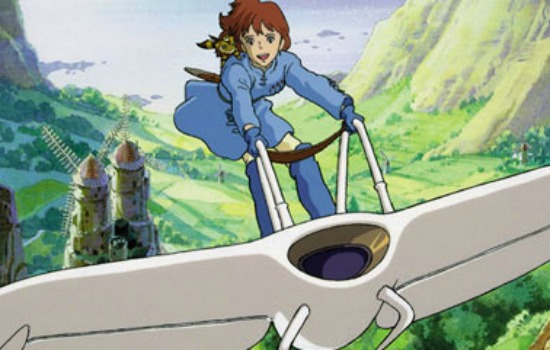
(Photo: Still from Nausicaä of the Valley of the Wind)
They live with nature and both of them are protectors of the environment in their different ways. Nausicaä, living in a toxic world following a war that destroyed human civilisation, is in touch with nature and even a toxic jungle that everybody avoids. She enters it wearing a mask and explores its beauty.
She also knows how to deal with the Ohmu, the giant mutated insects that turn red and attack people when they are provoked. She knows how to calm them down. It is interesting to see that instead of fighting great, inhuman monsters, killing them and praising the heroes, the film is more about respecting nature and learning how to be in harmony with it.
Ghibli’s other princess, Mononoke, is fierce. She wears a red mask and has streaks red colour on her face. She lives in the woods with wolves and hates humans for destroying nature. The film shows that the destructive nature of humans is the source of their downfall.
One of the Ghibli’s recent films, The Tale of Princess Kaguya, is also about a princess. Based on a Japanese folktale, the film is drawn with a style evocative of children’s illustrated books. The princess in this film is the only one that actually lives in a huge palace, but it is hardly her dream or her happily ever after. It is a tragic story about the destructiveness of the search for material attainment and high positions in court.
Again, the protagonist is very in touch with nature. In the first part of the film, she is still a child, growing up fast in the idyllic countryside. She makes a group of friends with which she goes on escapades. They walk around singing a beautiful song that begins ‘mawaremawaremawareyo’, which I found myself singing for days after I’ve watched the movie.
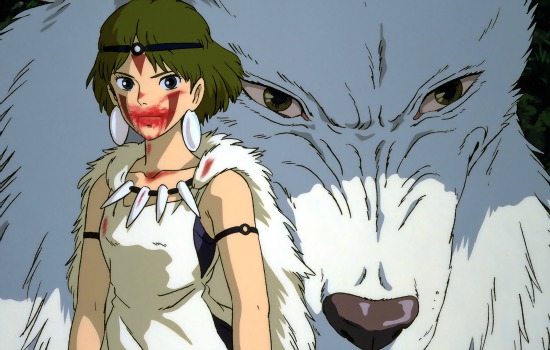
Princess Mononoke (Photo: still from the film)
Another tale of growing up is Kiki’s Delivery Service, though Kiki is a bit different from the other Ghibli protagonists. Kiki is both self-conscious and unsure of herself. The film recounts her journey of self-exploration and growth. Kiki is a young witch, who has turned 13 and moves away for one year for her witch’s training.
What Kiki goes through is relatable on many levels to any viewer who is trying to find his vocation. She finds herself delivering things to people while handling her job with great efficiency and connecting with people. Kiki infuses meaning in her job, and helps people out whenever she can.
When I first watched Kiki’s Delivery Service, I was struggling with a screenplay and I was overwhelmed with the difficulty of the task, and how nothing of what I was writing seemed to work. In the film, there is one scene where Kiki is staying with her artist friend and is talking about her worry about her losing her magical powers.
The advice that her friend gives was something I really needed to hear then and is great advice in general. It goes as follows: first thing is to wait it out, walk around, take naps and reflect until she could figure out her own voice, or style.
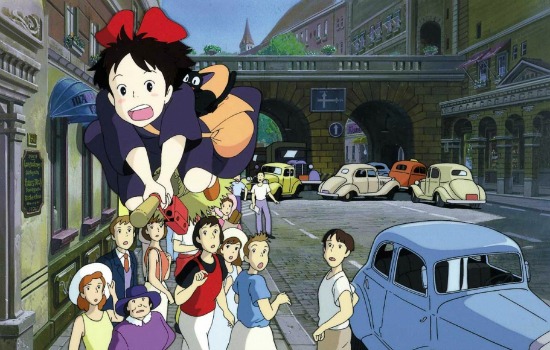
(Photo: Kiki’s Delivery Service)
There is no doubt that Miyazaki has his very own signature style. In fact, common themes and motifs could be traced in all of Miyazaki’s films, a large majority of which have to do with flight in one way or another.
Totoro takes the two girls and flies away with them. In Castle in the Sky, there is a flying city that few people have seen called Laputa.
Nausicaä moves around with a glider and Kiki on a broom. Kiki’s boyfriend is obsessed with planes and attaches a propeller to his bike. There is also Porco Rosso, which revolves around an Italian World War I ex-pilot. Miyazaki’s latest film, The Wind Rises, is a biopic about aerodynamics engineer Jiro Hirokoshi.
As mentioned before, nature also plays a big role in his films, even with films that do not have an environmental message. There are always beautiful shots of the natural world in his work.
It seems that Miyazaki is also fond of the juxtaposition of opposing subjects to create something interesting. In an interview about Kiki’s Delivery Service, he says that the city she moves to is a mixture of many European cities.
Howl’s Moving Castle also has one of the most interesting designs of a building seen in animation. It is a quirky mesh of many houses, boats, castles and other spare parts. In the book The Art of Howl’s Moving Castle, the director of digital animation Mitsunori Kataama says that Miyazaki urged him to treat the castle as a protagonist.
Although Ghibli is always associated with Miyazaki, there is also a lesser known but just as important director, Isao Takahata, the co-founder of Ghibli.
Among Takahata’s films are The Tale of Princess Kaguya, The Grave of the Fireflies and Pom Poko. It is not an overstatement to say that Grave of the Fireflies is the most devastating and tragic animation film there is.
An Indian friend I had met in Edinburgh captured it perfectly: “After watching it [Grave of the Fireflies] you feel like you threw your heart on the floor and squashed it into a million pieces.”
The film depicts life in the final months of World War II and the daily suffering that accompanies war. It revolves around a boy and his younger sister who have lost their mother and have to survive the calamities of war. It is indeed one of the greatest films about war.
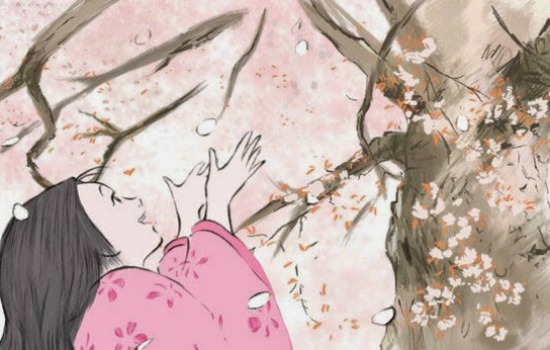
(Photo: Still from The Tale of Princess Kaguya)
The Tale of Princess Kaguya: Friday 13 November in the Opera House Main Hall
The Wind Rises: Saturday 14 November at 4:30pm in Hanager Cinema
Kiki’s Delivery Service: Sunday 15 November at 4:30 in Hanager Cinema
Spirited Away: Monday 16 November at 4:30pm in Hanager Cinema
My Neighbour Totoro: Tuesday 17 November at 4:30 in Hanager Cinema
Porco Rosso: Wednesday 18 November at 4:30pm in Hanager Cinema
Nausicaa of the Valley of the Wind: Friday 20 November at 10:00am at Hanager Cinema
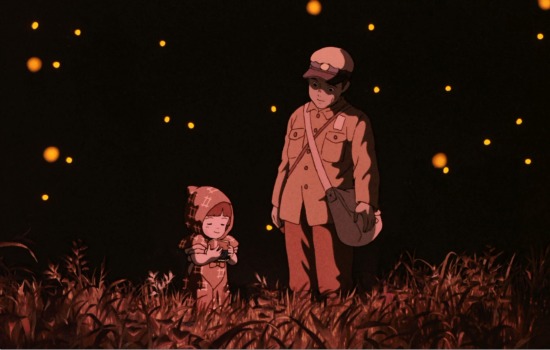
(Photo: Still from Grave of the Fireflies)
Short link: